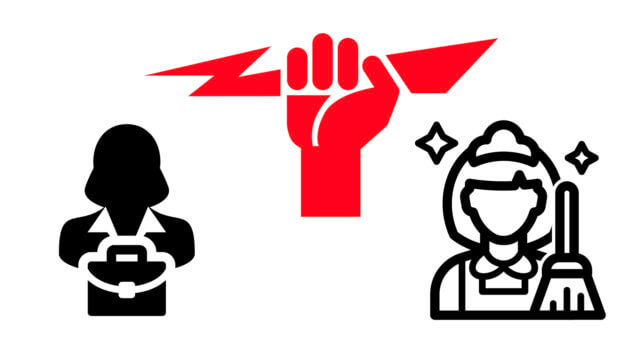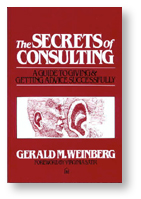Who has more power, a consultant or a janitor?

Obviously, the consultant has more power. They get to influence what happens at MegaCorp at a high level. Consultants have helped major industries successfully adapt to changing circumstances. (They’ve also been responsible for controversial decisions.) The lowly janitor? They just keep the office clean and tidy. Right?
Wrong. Actually, the janitor has more power! Here’s why.
Influence but no authority
Both the consultant and the janitor have responsibilities. MegaCorp contracted the consultant to give the C-suite good advice. MegaCorp pays the janitor to caretake the office.
The janitor has more power because they have the authority to do their assigned caretaking. Even though MegaCorp limits through the job description the scope and status of their work, the janitor has the power to determine how to clean floors and empty trashcans.
The consultant has no power to make any changes at MegaCorp. Consultants have influence — but no authority, no power. My mentor Jerry Weinberg defined consulting as the art of influencing people at their request. Any seasoned consultant, however successful, sometimes fails to influence their clients.
“As a consultant in various fields for 42 years, this is a familiar world: one where I have influence with a client but less authority than a janitor. Clients are free to ignore my advice. Sometimes they do, but clearly I have useful influence that typically leads to significant change. (Otherwise, I wouldn’t continue to be hired and — usually 😀 — appreciated.)”
—Adrian Segar, The declining influence of leadership positional power in a network society
The janitor has the power to caretake their building in the way they want and need. MegaCorp gives them that power while not granting any to the consultant.
The Hard Law
Having influence but no power is one of the hard things about being a consultant, as expressed by Jerry Weinberg’s Hard Law:
“If you can’t accept failure, you’ll never succeed as a consultant.”
—Jerry Weinberg, The Secrets of Consulting
This is indeed a tough truth to swallow. But Jerry adds an “atom of hope” with a reframe:
“Some people do succeed as consultants, so it must be possible to deal with failure.”
—ibid

 Growing up, just about every child experiences name-calling. I certainly did. Sometimes I’d tell my mum, and she’d repeat the childhood rhyme: “Sticks and stones may break my bones, but words will never hurt me.”
Growing up, just about every child experiences name-calling. I certainly did. Sometimes I’d tell my mum, and she’d repeat the childhood rhyme: “Sticks and stones may break my bones, but words will never hurt me.”
 Why is experiential learning superior to every other kind? In a word: feedback.
Why is experiential learning superior to every other kind? In a word: feedback.  My mentor
My mentor  How can we get better at doing anything?
How can we get better at doing anything?

 A while back I posted a summary of
A while back I posted a summary of 